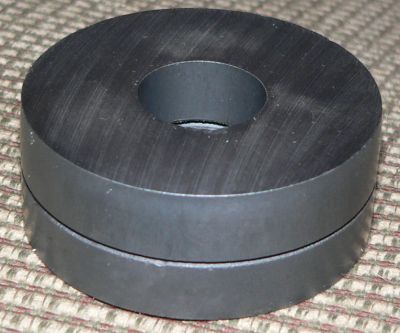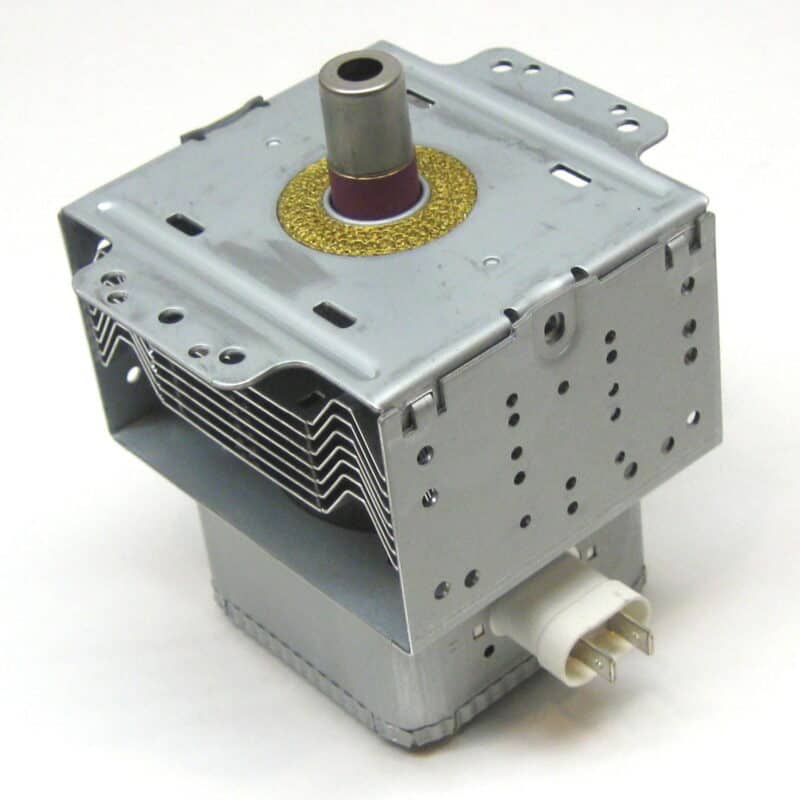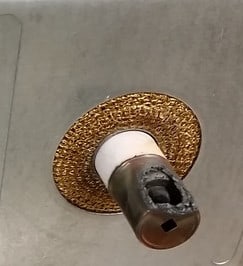Your old microwave includes some electronics worth saving, but the true prize is the magnetron’s two rather powerful ring microwave magnets. It takes some effort to obtain them, but it is well worth the effort. The microwave magnets are quite brittle, so don’t try to force them out. These magnets are not coated and are easily broken.
Here are some resources you will need to answer the question “How to remove the microwave magnets in your microwave.” In this piece, we’ll cover a few key points to help you understand how to remove microwave magnets from your microwave. They are as follows:
- In microwaves, what kind of microwave magnets are there
- How to take out the magnets from your microwave
- What causes the microwave magnet to fail
- Frequently asked questions
- Summary
Table of Contents
In Microwaves, What Kind Of Microwave Magnets Are There
Two large spherical ceramic magnets are found within every microwave stove’s magnetron, which is the vacuum tube made of copper that produces the actual microwave which heats your food. The cooking compartment beneath its control panel is cooled by aluminum cooling fins, which are attached to an open-framed gadget.
Even the smallest microwaves contain two 2-inch diameter 3/8 ceramic microwave magnets, which produce the magnetic field to rotate the waves, guiding them in some kind of tuned cavities, and out of the antenna of the tube, down a waveguide, and then into the stove. At least, that’s how we would describe the process in the most straightforward way.
We’ve met many skilled people with many years of experience in fixing a bunch of microwaves, and anytime they scrapped a magnetron, they always saved the two magnets that came with it, and they’re a great thing to have on hand.
We utilize them for a variety of tasks around here, including swiftly securing tarps over outside machinery, putting paperwork on some steel refrigerators and notice boards, magnetizing screwdrivers, hanging up equipment, and many more.
Therefore, the next moment you find any trashed microwave, and before you throw one away, open up and take out the magnets. We’ll go into how to remove them in more detail below (you can also find YouTube videos, and so on this topic), but they’re simple to remove as well as the procedure is safe and quick.
A few pointers on how to deal with them: They’re not as strong as neodymium magnets, but they’re powerful enough to pinch your finger if one gets caught between them. They’re also quite brittle because they are ceramic, so hitting or dropping them with a heavy object may break or damage them.
How To Take Out The Magnets From Your Microwave
What You’ll Need To Get Started
To disassemble a microwave, you’ll need tools; your bare fingers won’t suffice.
- A collection of screwdrivers of various sizes and shapes.
- Cutters for wire.
- Pliers.
- Clip with an alligator.
- Hammer (you’ll only need this if you need to break something apart).
Based on the microwave type you’re dismantling, you may require additional tools.
Steps To Remove The Microwave Magnets
The first step is to provide notice! Yes, pulling apart a microwave could be quite dangerous if done incorrectly. There’s a high-voltage capacitor in it that can remain charged and deliver a deadly shock if left unattended.
With bolts or screws (usually 4), mags are fastened to their waveguide. There are no poisonous gases or radioactive materials in it; only aluminum, steel, copper, and ceramics are present. This is how it seems. These two black sections divided by the fins are the magnets.
The most difficult phase is over: taking this out of your oven! Wear a pair of gloves and then pick the wire cutters to release the four retainers from its corners, then take off its top plate. This top plate easily pulls off once all four tabs have been bent back. To clean it, you may need to spread its sides a little using 2 sets of pliers.
Don’t be afraid to yank on it; there was nothing harmful in the magnet – no electrical current, no radiation, nothing. There are only sharp sheet metal edges to be aware of. A large washer is frequently pinched on top of its higher magnet when the top plate is removed.
After that, simply grab its cooling fins then pull the magnet guts out from the case, extending its two wires along the way. After you’ve cut those out, you will have the fins, magnets, and mag tube in your hands.
Remove each magnet and discard the others. When these magnets are close together, be careful since they can squeeze your fingers and break easily (not your fingers, we mean the magnets!). It’s as simple as that!
It’s just the vacuum tube, such as the ones found in antique radios and televisions, except instead of the transparent glass tube, it’s housed in such a thick metal shell. If you slice it open, you will discover chambers within that are sized to create waves of roughly 2450 MHz or 2.4GHz, which is strange, the same for most Wi-Fi).
For the next project, you already have some free microwave magnets.
What Causes The Microwave Magnet To Fail
At some time throughout the cooking process, every microwave has had the difficulty of not warming the foods inside the oven. However, have you considered why this is the case? What causes the microwave magnet to fail? If you already know the solution, that’s because the magnet in the microwave oven was damaged.
But, did you know what’s causing a microwave oven’s magnetron to struggle? There are a variety of reasons for a magnetron inside a microwave to malfunction. Resistance continuity, a loose magnetron connection, a burned antenna/dome, burned-out connections, magnets cracking, and so on.
The Causes
There are a few reasons why food is cooked in microwaves with low or no temperature. Look for the reasons for magnetron failure on this account.
Magnets are breaking
This occurs when the magnets in the magnetron are damaged, resulting in a reduction in its magnetic field. In magnetrons, the magnets’ overheating also causes harm to their magnets. The microwaves bouncing back to their magnetron cause the magnetron to overheat.
Terminals that have been burned out
The insulator inside the magnetron is designed to strengthen the entire magnetron from direct voltage attack. However, any damage to it could cause the insulator to fail. The magnetron terminal is burned as a result of the insulator breakdown. It rises with each cooking cycle, resulting in more severe burnout.
Burned Dome/Antenna
We could see the magnetron’s antenna/dome inside the microwave on the interior of something like the filament box. This reflection back of microwaves when cooking is the source of the damage. The reflected microwaves harm the microwave stove’s antenna/dome, preventing it from sending microwaves.
Loose magnetron connection
It is the most typical reason for the magnetron to fail. This sloppy connection generates a lot of heat resistance. Other sections next to this magnetron will be burned out as a result of the heat, resulting in black patches and burn scars on the affected area.
Resistance continuity
The resistance continuity is part of the testing procedure because the above reasons are tangible to observe. An ohmmeter is used to evaluate the resistance between the magnetrons’ terminals. You must unplug the microwave stove’s power terminal before testing.
The resistance continuity should be infinite after adding the ohmmeter. If the measurement isn’t continuous, there’s a problem with your microwave’s magnetron.
Internal arc-over
This occurs when gas forms within the magnetron. When the energy is delivered suddenly and the gas was maintained within the magnetron, this will cause an internal arc-over.
Symptoms To Look For When The Magnetron Fails
Whenever a magnetron malfunctions, there are a few signs to look for:
- There is no heating.
- It smells like it’s on fire.
- Sounds of arcing.
- A snapping sound can be heard.
The disease is in the process of being eradicated when it comes to a halt. If you notice these signs while heating meals in your microwave, turn it off by disconnecting its main power source, and repair or replace the magnetron as soon as possible.
Repair/Replace The Magnetron
But which is better: replacing or repairing your magnetron in your microwave oven? It all depends on how badly the magnetron has been damaged. As a result, it is preferable to identify the issue first before deciding to replace or repair it.
Because magnetrons are costly to acquire, it’s fine if the issue is repairable; nevertheless, if the issue is serious, you’ll need to replace the magnetron with a new one. When a repair is done incorrectly, the problem can resurface.
If you wish to replace your magnetron with such a new unit, get a skilled technician to do so. Because there will be a residual of power in your magnetron that can produce shock.
How Does A Magnetron Work
However, do you understand how a magnetron tends to work? The microwave, in general, uses a magnetron to convert electrical power into microwave energy. One vacuum tube that has a hollow anode rod that has cavities and a cathode rod in the center surrounds this magnetron.
The electrons warm up this cathode rod as electricity passes across it. The electrons are excited towards the anode by the cathode rod that is heated. As a result of this magnetic field, these electrons prefer to proceed in a curving rather than a straight path towards the anode.
Those curved electrons have a tendency to interact with the anode’s cavities. These resonations occur at a frequency that is equal to that of microwaves. As a result, the antenna generates microwaves for the magnetron.
Frequently Asked Questions
Is It Possible To Fix A Broken Microwave
Yes, if you have somewhat basic knowledge of electrical/electronic equipment, you can remedy the issue of no heat inside the microwave. The reason for no heat in your microwave oven was due to a high voltage diode or damaged magnetron.
Is Repairing A Microwave Dangerous
When you do not really know enough about microwaves, it can be dangerous. It’s also not a good idea to mend when you’re by yourself at home. Any incorrect repair can result in shock and burnt-out components.
What Is The Hazard Of A Magnetron
Even if the magnetron’s power supply is turned off, it is not safe. Inside of the magnetron, there are certain remnants of power that can induce shock. Furthermore, the insulating substance isn’t really safe to handle with bare fingers since it is covered with beryllium oxide that is toxic if inhaled.
Is It True That Magnetrons Are Radioactive
No, this magnetron generates nonionized microwaves, which are less dangerous to humans. However, prolonged exposure might cause issues such as burns, blood changes, and so forth.
Summary
Finally, it’s indeed up to you to determine the signs of magnetron harm and switch it off as soon as possible. Consider whether or not to fix the magnetron, since the poor repair will result in damage in a short period. Periodic maintenance seems to be the greatest solution for overcoming all of the causes of microwaves failure, including magnetron damage.
To sum up, check out this video below to have an overall view of how to get free microwave magnets from your microwave.
We’re confident you’ll find a plethora of applications for these microwave magnets, just as we have, as well as the cost of a set is unbeatable! We hope this information was useful. You now understand how to remove microwave magnets from your microwave.
We also have another review on the quietest microwave on the market, so if you’d like to check it out, feel free to do so. As usual, if you have any additional information regarding a microwave magnet that you’d want to share, then do so in the comment box below! Thanks a lot for reading this piece. Have a fantastic day!
| Read Also: Top 10 Tiger Rice Cooker Replacement Parts You Do Not Want To Miss Top 10 Delonghi Toaster Oven Parts & Tips To Choose The Best One |
G Patel has been honing his craft in the restaurant industry for over 25 years. After graduating from North Carolina State University with a degree in business, G set out to turn Eschelon Hospitality into a recognized brand throughout Carolina’s state restaurants; and he did just that when acquiring Mura North Hills. Since then, it has become an iconic sushi-serving establishment.




